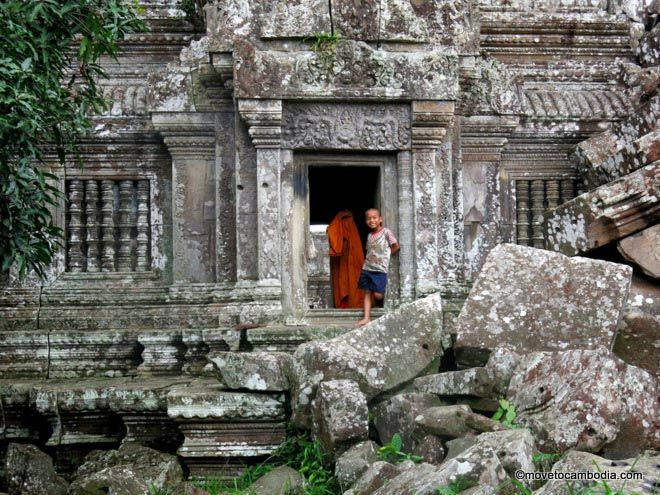Any discussion of Khmer culture and modern Cambodia must begin with a look at the country’s troubled past.
What is now Cambodia was an ancient civilization, starting as early as 4200 BCE (Before the Common Era). Pots from that time have been found in northeast Cambodia and are similar to ones you’ll find today in Phnom Penh’s Orussey Market. Then came the Funan Kingdom and then the Chenla Kingdom. Next was the golden age of Cambodian civilization: the Khmer Empire.

Cambodia’s history spans centuries.
Between the 9th and 13th centuries the Khmer Empire was one of the most powerful forces in Southeast Asia, ruling parts of modern-day Thailand, Burma, Laos, and Vietnam. The Khmer Empire’s capital city was Angkor; what remains of its temples is now a major tourist attraction outside of Siem Reap.
It is believed that water supply problems hastened the end of the Angkorian monarchy, and the final straw was when the Thais captured Angkor in in 1431, spurring Khmer migration toward the Phnom Penh area. From 1500 until the arrival of the French in 1863, Cambodia was pushed and pulled between its now more powerful neighbors, the Vietnamese and the Thais. During this time Cambodia suffered great territorial losses and was nearly swallowed up altogether.
In 1863 King Norodom signed an agreement with the French making his country a protectorate of France and bringing baguettes to the Kingdom. Like most of Asia, Cambodia was occupied by the Japanese during World War II, but France’s German-collaborating Vichy government was still nominally in charge until the Japanese briefly took complete control in 1945. After the war the French regained control again, but in 1953 they agreed to grant Cambodia its independence.
During the 1950s and 1960s, while war raged in neighboring Vietnam, King Sihanouk gave lip service to neutrality, while at the same providing tacit support for the North Vietnamese. By the mid-1960s the North Vietnamese were setting up bases in Cambodia’s eastern provinces and using the port of Sihanoukville for supplies in their war against South Vietnam and the United States. In 1969 the US began a bombing campaign in Cambodia that lasted until 1973, dropping 2.7 million tons of bombs—around the same amount as dropped by the Allies in Europe during World War II. Hundreds of thousands of Cambodians were killed or displaced.
In 1970 King Sihanouk was overthrown by a new government headed by the US-backed Lon Nol and a bloody civil war soon began. Sihanouk fled to Beijing and threw his support to the fledgling Cambodian communist group, the Khmer Rouge, who vowed to overthrow Lon Nol.
Sihanouk’s support encouraged many Cambodians who knew little about communism to join the ranks of the Khmer Rouge. Later that year the United States and South Vietnam invaded Cambodia in order to destroy North Vietnamese bases. However, the North Vietnamese had already retreated deeper into the Cambodian countryside and had begun to aid the communist insurgency. Many believe that it was the United States’ Southeast Asian intervention, and in particular its massive bombing campaign, that allowed the Khmer Rouge to gain credibility and drove many Cambodians to join their ranks.
Read more about the Khmer Rouge era and its lasting impact on Cambodia.